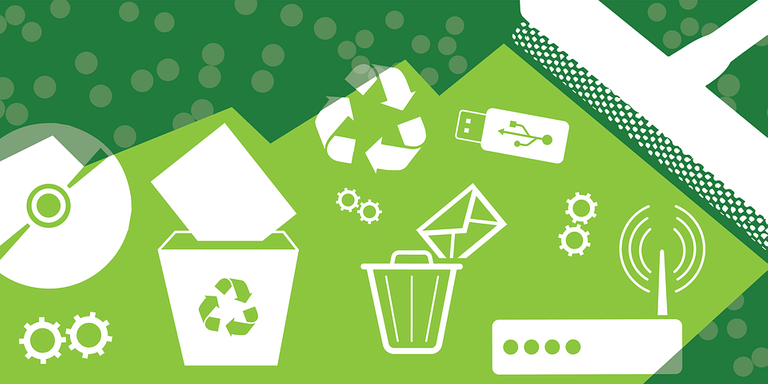Clean Technology: The journey so far
The planet has been polluted more than ever before. The global climate has become erratic; climate predictions are turning to jokes. Glaciers are shrinking and polar ice caps are fast diminishing. Our biodiversity heritage is fast depreciating. Something needs to be done urgently or something will have to give.
As man's population, as well as his level of technological development, increased, so is his level of discharges to the environment with the accompanying cost to his environment and to public health. There is increasing pressure for all, especially businesses to reduce their discharges because of the negative impacts of these discharges on both the living and non-living components of the environment.
At the Earth Summit in Rio de Janeiro, in 1992, waste management discussed with the aim of minimizing waste, maximizing environmentally sound waste reuse, recycling, and disposal, as elimination is currently unrealistic. New technologies are currently evolving to reduce waste at the design phase.
Clean technology Is the production of goods and services without detectable environmental impact. Clean technology optimizes the use of natural resources thereby reducing the negative effect that technology has on the planet.
Clean technology developed as a result of the realization that increasing demand for and use of non-renewable resources is unsustainable due to developing resources, increased by-products of production, and consumer waste. In the European Union, the 1991 Framework Directive on Waste, contains an obligation to reduce waste by cleaner technologies, waste recovery, and recycling.

Clean Technology and Waste Minimisation Techniques
Waste minimization techniques consist of waste reduction and recycling.
Waste reduction
The reduction in the amount of waste being released to the environment is targeted by;
(a) Product changes: Product changes involves altering the product to reduce waste in the manufacture, use, and disposal.
(b) Input material changes: Input material changes is the replacement of potentially hazardous materials inputs with less non-hazardous inputs with a view to reducing the impact.
(c) Technology changes: Technology changes involve the use of cleaner processes, where the processes are designed to minimize waste and pollution.
Recycling
Recycling involves the processing of wastes to make them reusable or transform them into raw materials for production. Recycling is achieved in the following ways:
(a) Reclamation: Reclamation is achieved by sorting through waste and use waste as raw material or sell them.
(b) Re-use: Re-use waste materials as raw materials for another product.
Important Elements in the Implementation of Clean Technology by Companies
The implementation of clean technology by an organization requires total commitment to the cause. Organizational commitment is important for implementation and is showing in a variety of ways, including:
- A statement of organizational policy: Each organization must have a clearly stated statement in the policy book that shows that they are pro-clean technology.
- Training of all staff: The employees of organizations must be well trained in such a way that they are clean technology compliant.
- There must be a strategy for implementation of the clean technology policy with the allocation of a manager.
The making of policy is not the problem, but the implementation of it. Establishments often face different challenges in trying to implement their policies. The various barriers to organizational commitment Include:
- Economic barriers due to insufficient resources.
- Resistance to change due to fear.
- Cultural barriers due to lack of top management commitment, low awareness, and poor communication.
- Technical barriers due to a lack of knowledge and expertise.
- Regulatory barriers if regulations are cumbersome.
Benefits of Clean Technology
The adoption of technology that is clean and environment friendly has several benefits for both the environment itself and mankind in general. Some of the benefits have been highlighted below:
- The negative impact on the environment is minimized because clean technologies usually focus on type, amount, and how toxic the discharge is and then try to minimize the toxicity or seek better alternatives.
- Focusing on clean technology helps organizations to improve their efficiencies as a result of constant review of production processes and technologies.
- It leads to increased profit as a result of marketing edge leading to more sales, and waste cost savings. Adoption of clean technology gives companies comparative advantages over their competitors and can be included in their unique selling point.
- Reduced environmental liability due to reduced risks to the environment, health, and safety. The health of workers and the human population, in general, suffers less. Polluted environments constitute risks to the lives of humans and biological diversity in general.
Uses of Clean Technology in Environmental Management System
Clean technology offers a variety of applications to the environmental management system. These include
- It helps in the identification of significant environmental aspects.
- It helps to offer solutions for areas with problematic environmental implications.
- It helps to identify areas where improvements are necessary.
- It helps to identify possibilities for the redesign of products and processes, thus minimizing environmental health and safety risks.
Thank you all for reading.
Resources
Posted with STEMGeeks
Engineers and investors must mind to incorporate sustainable feature in their tech. I agree that we must have environmentally proactive technology.
Unfortunately, the big companies and the government do not give a hoot about the environment as long as the funds keep coming in and they keep paying tax.
Thanks for your contribution to the STEMsocial community. Feel free to join us on discord to get to know the rest of us!
Please consider supporting our funding proposal, approving our witness (@stem.witness) or delegating to the @stemsocial account (for some ROI).
Please consider using the STEMsocial app app and including @stemsocial as a beneficiary to get a stronger support.
Renewable energy is the way, maybe the main one.
No doubt. Since the non-renewable ones will fade off one day. Renewable is the future, whether we like it or not.
Yes, I agree